There’s no place like home, right? Earth is the only home humans have ever known in the universe, and due to the forbidding conditions everywhere else in our solar system, it’s likely to remain that way for some time. Astronauts looking down on our planet from space often feel a sense of awe and peace at the sight. Like nowhere else, our home is engineered for our existence, including the specific tilt of our axis, our breathable atmosphere, and our distance from the Sun. So just how far away is Earth from the Sun and other planets? Read on to discover the answers!
How Far Away Is Earth?
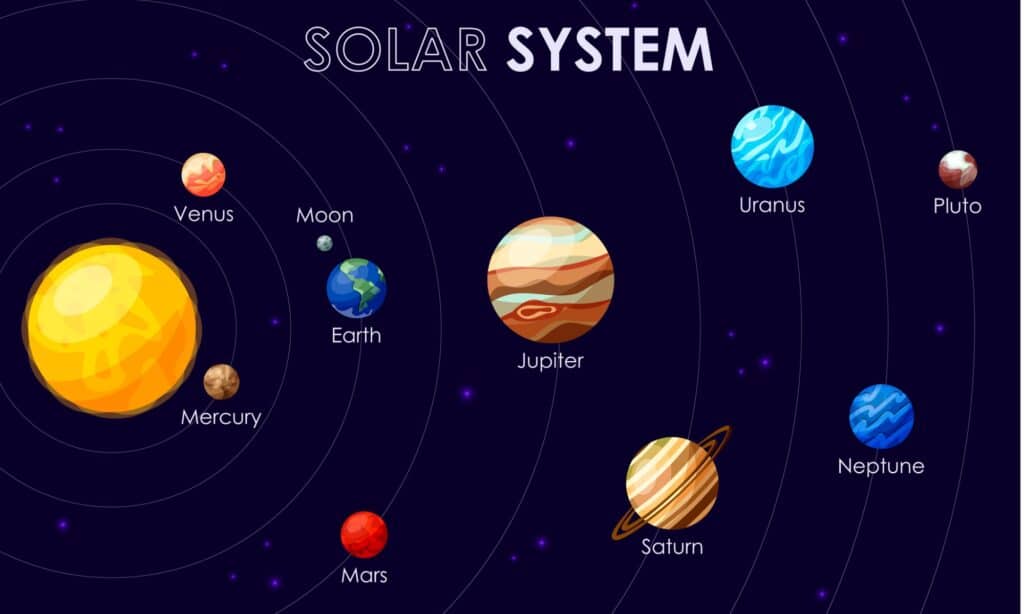
Earth is the third planet from the Sun and the third of the terrestrial planets.
©iStock.com/Alexander Timoshin
Earth lies about 93 million miles from the Sun on average. This equals 1 AU (astronomical unit), which is a way of measuring distance in the vastness of space. Scientists also express distance in light years. A light year is the distance light travels in one Earth year. Scientists may alternate this unit with light hours, light minutes, and light seconds to convey the speed of light in more relatable terms.
Distance From Earth to the Sun: 93 Million Miles
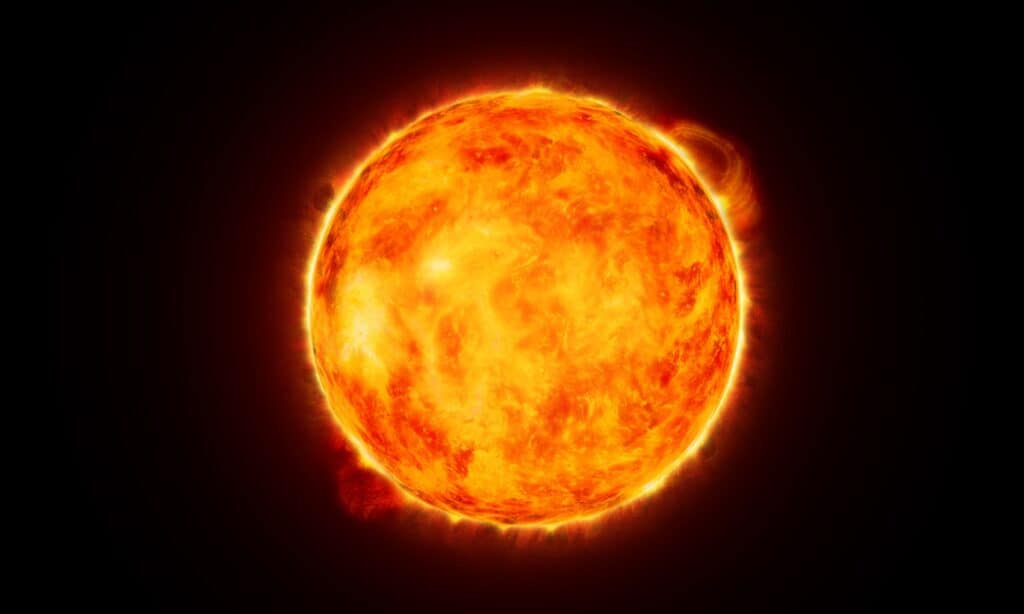
The average distance from Earth to the Sun is 93 million miles.
©iStock.com/hadzi3
The average distance from Earth to the Sun is 93 million miles or 1 AU. At its furthest point (aphelion), our planet is 94.54 million miles away; at its closest point (perihelion), it is 91.4 million miles away. In other terms, we’re about 0.00001581 light years from the Sun, which comes to 8.2 light minutes.
If it were a hollow ball, the Sun could accommodate approximately 1.3 million Earths inside itself. With a diameter of 864,000 miles, the Sun is 109 times wider than our planet. Without its heat and light, planetary life would be impossible. However, too much exposure to its heat and radiation would also prove deadly.
Distance From Earth to Mercury: 56.97 Million Miles

The average distance from Earth to Mercury is 56.97 million miles.
©iStock.com/FlashMyPixel
The average distance from Earth to Mercury is 56.97 million miles or 0.61 AU. At its closest, our planet is 48 million miles from Mercury; at its furthest, it is 138 million miles away. As the smallest planet in the solar system, Mercury would fit inside ours 18 times over. It lacks moons and rings and has an extremely thin atmosphere. Temperatures on the planet are also extreme compared to ours, with highs up to 800°F (430°C) and lows plunging to -290°F (-180°C) at night. Without a proper atmosphere, temperature regulation is impossible.
Distance From Earth to Venus: 25.7 Million Miles
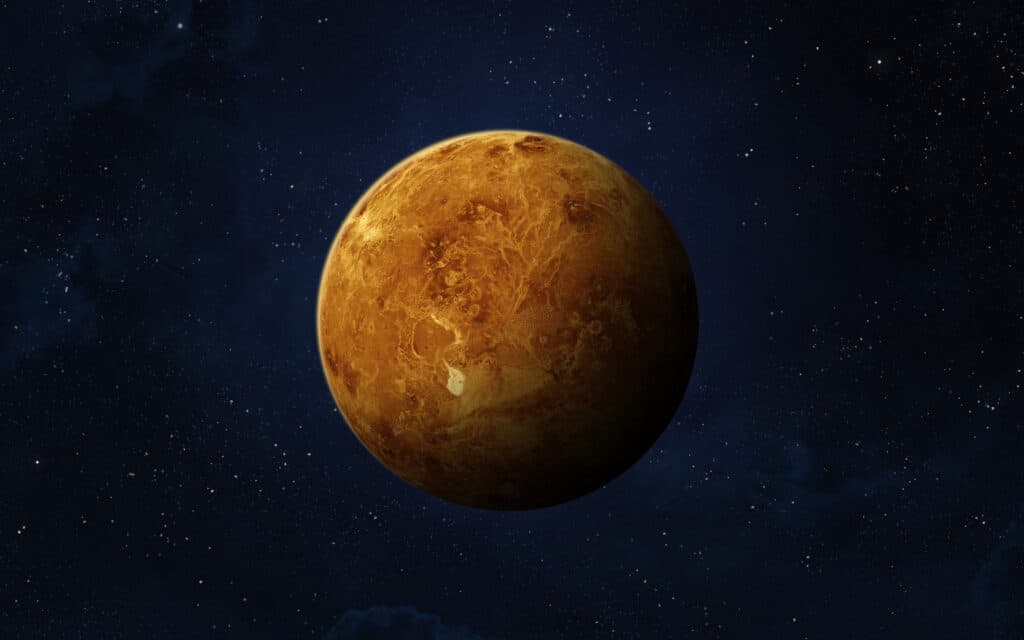
The average distance from Earth to Venus is 25.7 million miles.
©iStock.com/buradaki
The average distance from Earth to Venus is 25.7 million miles or 0.28 AUs. The maximum distance between us is 162 million miles, while the minimum distance is 23.6 million miles. Our two planets are often called twins due to similarities in volume and mass. Venus has a diameter of 7,521 miles, while Earth is slightly larger at 7,926 miles. It also passes closer to us than any other planet in the solar system.
However, our planets have few similarities beyond this. Venus is the hottest planet in the solar system, with temperatures up to 872°F (467°C). Its suffocating atmosphere, composed of 96% carbon dioxide and dense clouds of sulfuric acid, traps heat from the Sun in a greatly exaggerated greenhouse effect. Mountains, craters, volcanoes, and lava cover its surface, rendering it an utterly hostile place to live.
Distance From Earth to Mars: 140 Million Miles
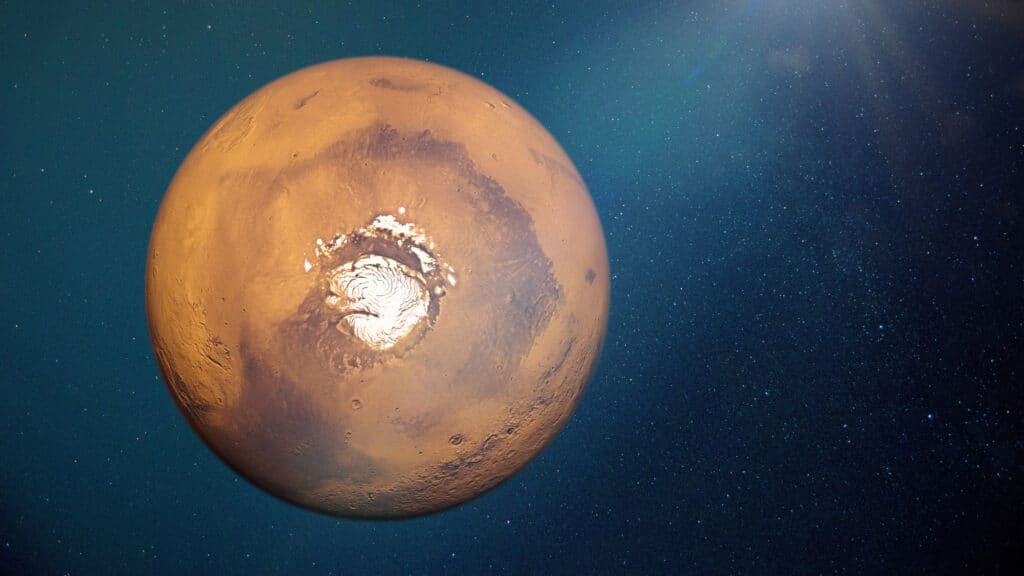
The average distance from Earth to Mars is 140 million miles.
©iStock.com/dottedhippo
The average distance from Earth to Mars is 140 million miles or 0.52 AU. The maximum distance between the two planets is 249.1 million miles, while the minimum distance is 33.9 million miles. Though Mars is significantly smaller than our planet, able to fit inside 7 times over, it has inspired the human imagination perhaps more than any other planetary body. Scientists hope to land humans on Mars one day and perhaps even colonize it. Though human colonies won’t be possible for many years, the avid exploration of Mars continues unabated.
Distance From Earth to Jupiter: 391 Million Miles
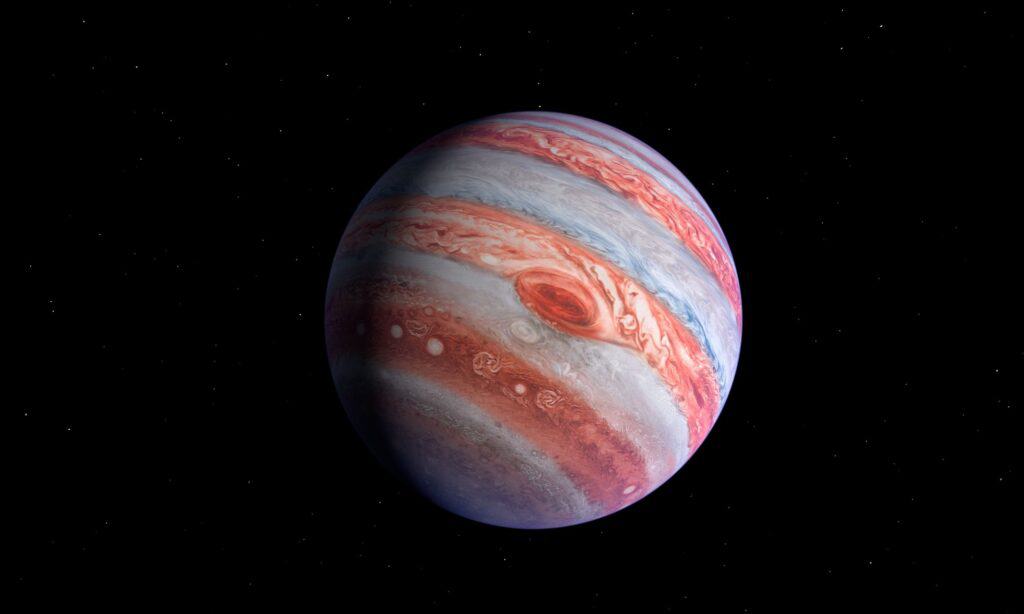
The average distance from Earth to Jupiter is 391 million miles.
©joshimerbin/Shutterstock.com
The average distance from Earth to Jupiter is 391 million miles or 4.2 AU. At its furthest point, Jupiter is 601 million miles away; at its closest point, it is 365 million miles away. Jupiter is the largest and most massive planet in our solar system, able to hold all the other planets inside itself at once. As for ours, it could fit inside Jupiter 1,300 times over. In fact, Jupiter’s famous storm, the Great Red Spot, is twice as big as Earth!
Distance From Earth to Saturn: 792 Million Miles

The average distance from Earth to Saturn is 792 million miles.
©iStock.com/Elen11
The average distance from Earth to Saturn is 792 million miles or 8.52 AU. The maximum distance between our two planets is 1.74 billion miles, while the minimum distance is 746 million miles. Saturn is most famous for its 7 rings, which are more complex and visible than any other planet’s rings in the solar system. Saturn also has the most moons of any of the 8 planets, with 53 confirmed and 29 awaiting confirmation. Its largest moon, Titan, is bigger than Mercury. Our planet, of course, has no rings and only one moon.
Distance From Earth to Uranus: 1.7 Billion Miles

The average distance between Earth and Uranus is 1.7 billion miles.
©iStock.com/IncrediVFX
The average distance between Earth and Uranus is 1.7 billion miles or 18.21 AU. At its closest, Uranus is 1.6 billion miles away; at its furthest, it is 1.98 billion miles away. Uranus looks pretty from a distance with its bluish-green tint, but don’t be fooled: this ice giant has nowhere to stand and no way to warm up. It’s the coldest planet in our solar system, with temperatures as low as -371°F (-224°C), making Antarctica look like a tropical paradise.
Distance From Earth to Neptune: 2.703 Billion Miles

The average distance from Earth to Neptune is 2.703 billion miles.
©iStock.com/3quarks
The average distance from Earth to Neptune is 2.703 billion miles or 29.09 AU. At its closest, Neptune is 2.7 billion miles away; at its farthest, it is 2.9 billion miles away. Neptune is a viciously windy planet with wind speeds up to 1,200 miles per hour or almost 2,000 kilometers per hour. Coupled with its bone-chilling temperatures and icy composition, it is one of the most forbidding places in our solar system.
Which Planets Are Visible From Earth?
All 8 planets are visible from Earth, though not all are visible to the naked eye. Take a look at the chart below to find out which planets you’ll need to view using a telescope. In all cases, binoculars or a telescope will significantly improve the viewing experience. Also, check out this guide to finding planets in the night sky.
| Planet | Visibility |
|---|---|
| Mercury | Visible to the naked eye |
| Venus | Visible to the naked eye |
| Mars | Visible to the naked eye |
| Jupiter | Visible to the naked eye |
| Saturn | Visible to the naked eye; rings only visible with a telescope |
| Uranus | Telescope usually required |
| Neptune | Telescope required |
Will Earth’s Orbit Ever Change?
Earth’s orbit has changed several times in history, influencing the climates of our planet. At present, Earth appears to be very slowly drifting away from the Sun. However, this drift is extremely minute, changing by only 0.6 inches (1.5 centimeters) per year. Eventually, this pattern will reverse, and our planet will plunge into the Sun if the Sun doesn’t engulf it first. In 5 billion years, the Sun’s fuel will run out, and it will become a red giant star, expanding and consuming Earth.
The more we explore the other celestial bodies of our solar system, the more we come to appreciate the incredible beauty and diversity of our earthly haven.
The photo featured at the top of this post is © iStock.com/Thaweesak Saengngoen
Thank you for reading! Have some feedback for us? Contact the AZ Animals editorial team.






